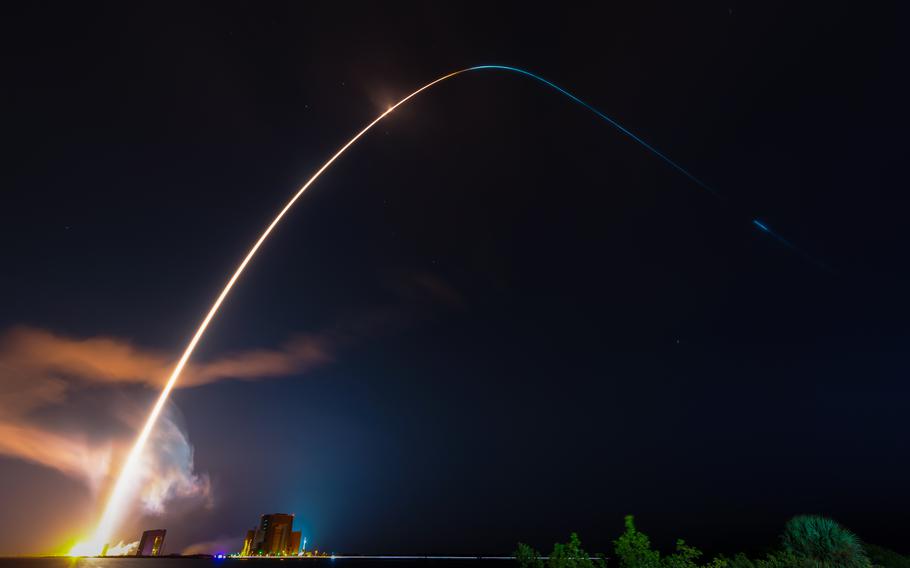
A United Launch Alliance Vulcan VC2S rocket launches for its first certification mission from Space Launch Complex 41 at Cape Canaveral Space Force Station, Florida, Jan. 8, 2024. (Joshua Conti/U.S. Space Force)
United Launch Alliance’s new Vulcan rocket blasted off to space on Friday, a critical test of the Boeing Co. and Lockheed Martin Corp. joint venture’s ability to loft spy satellites for the U.S. government.
Vulcan thundered off the launchpad at 7:25 a.m. local time from Cape Canaveral, Florida, nine months after the vehicle made its debut launch. The flight lasted roughly 30 minutes.
It’s a critical time for ULA, which is a key launch provider for the U.S. government. The Pentagon has been putting pressure on the company and levying fines over delays with Vulcan, which is five years behind schedule. And as SpaceX’s primary competitor, a successful launch of Vulcan would help pave the way for ULA to compete for more lucrative contracts and jump-start its commercial business.
No customer satellites were on board this mission. Instead, ULA launched carrying a dummy satellite — with some technical experiments embedded inside — to simulate the weight of a spacecraft.
ULA made the decision to fly the dummy payload in order to get off the launchpad sooner rather than later. It made the swap due to delays with its original cargo, Sierra Space’s Dream Chaser plane.
ULA’s been in a hurry to fly Vulcan as the company is under contract to launch more than two dozen Space Force missions with the new rocket. Because the rocket is a new vehicle, the military required ULA to launch two flights to certify it was capable of handling the government’s most sensitive spacecraft.
The flight happened as Boeing, which is burning cash as it navigates a worker strike, and Lockheed explore the sale of ULA — most recently during talks with Sierra Space.
Going into Friday’s flight, ULA Chief Executive Officer Tory Bruno was confident about Vulcan’s chances of getting certified for Space Force missions given how well the rocket performed during its January debut.
“It was the cleanest first launch I’ve ever had,” Bruno told reporters ahead of the flight.
ULA is gearing up for a busy end of the year — and an even busier 2025. The company hopes to launch two Space Force missions with Vulcan before the new year. And next year, the company plans to fly as many as 20 launches — a mixture of flights using Vulcan and the company’s retiring Atlas V.
Also on the docket for next year are the first launches for Amazon.com Inc.’s Project Kuiper, the internet-from-space initiative set to rival SpaceX’s Starlink. Originally, Amazon had planned to launch its first satellites for the project on ULA’s Atlas V rocket by the end of this year. But Bruno said the first launches will now take place early next year, as ULA needed to prioritize its launches for the U.S. government.
“It’s because of the national security space missions that are urgent, that Amazon is supportive of,” Bruno said.
Bruno also said ULA would find time in 2025 to fly Sierra Space’s Dream Chaser, but did not specify when that might take place.